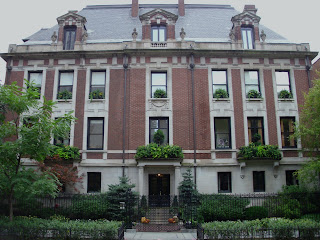Labour. To put it quite bluntly, today, as was the case in decades gone by, the running of the city (whether it be Chicago or New York) at a personal level relies heavily on immigration and immigrants. Just look to how historically farming in the South has relied heavily on Mexicans to bring in the crops, or how the building of the railroad relied upon the Chinese. More often than not the industries of manufacturing, food service, construction and housekeeping (janitors, cleaners, etc.) are dominated by immigrants from Mexico and Poland in the city of Chicago. These jobs are often described as the jobs that Americans just don’t want, and without the large immigrant labour force the city of Chicago would likely suffer for it. Of the 574,055 Mexican residents of Chicago in 2000, 407,904 of these were foreign born and nearly 75% of these are found in one of the four industries mentioned before (Koval, 199-200). We also talked about in class how the construction profession is often dominated by Polish immigrants – though we must certainly not hold this against the Polish community, because I know how much Chicagoans love construction in the city!
Not only this but culturally the amount of immigrants in the city helps add to the ‘Chicago as a Global City’ dynamic that I discussed in last week’s blog. With the examples of rich ethnic culture found in neighbourhoods such as Pilsen and Little Italy, and the fact that such events as the International Chicago Film Festival (note the emphasis) are held here help add to this dynamic. Also I know that the Day of the Dead Parade is now such a part of Chicagoan culture that a North Central College student group are actually organising a student trip to go and partake of this in Pilsen this week.
I suppose it is arguable that today immigrants face quite a few obstacles that they have always faced throughout history. There is always an immigration issue to answer for in US general elections, limits upon immigration have always existed, and the day-to-day prejudice that immigrants face from every passer-by (be it the one who generalises what job a certain immigrant should hold, or the one who grumbles that “they come here and take our jobs” – ‘they’ being every person who does not sound or look American) are a part of the immigrant experience.
Though I am sure that if a modern day Jane Addams were to start up a settlement today the FBI might not jump straight to calling them the most dangerous person in America. And with communities such as Pilsen in which Mexican culture is very openly celebrated it would be more comfortable for an immigrant to try and establish them self in the city than say for someone struggling in ‘Little Hell’ and faced with the more overt prejudices of someone like Zorbaugh.
I do not wish to belittle the struggle of any immigrant today, in fact I think they should be celebrated more than they are because they contribute to the American way of life just as much as anyone one else does from what I can see. Now my blog is in danger of becoming a slight rant at immigration issues, so I shall just finish by saying that I believe the labour contributions of immigrants in any city stand as one of the most important and significant factors in, not only, immigrant life, but in regular city life too.
